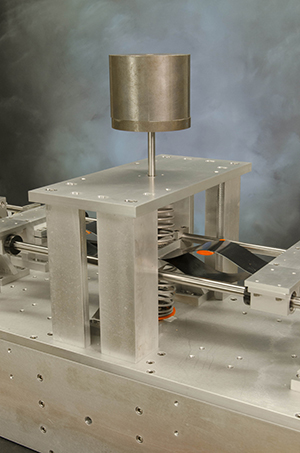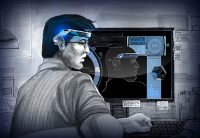HRL Receives DARPA Award for Multichip Integration

HRL Laboratories, LLC has received an award from the Defense Advanced Research Project Agency (DARPA) under its Diverse Accessible Heterogeneous Integration (DAHI) program to develop a novel multichip integration technology using HRL’s Metal Embedded Chip Assembly (MECA) process.
HRL Laboratories Achieves Guinness World Record for Lightest Metal

HRL researchers originally made headlines with a famous image of a metal microlattice structure resting atop an unaffected dandelion. Now the material has been vetted and confirmed by the Guinness book as having no peer among metals when it comes to weight.
DARPA Awards HRL $1.5 Million to Develop MEMS-based Oven Controlled Crystal Oscillator for Atomic Clocks

The Defense Advanced Research Projects Agency (DARPA) has awarded HRL Laboratories, LLC, $ 1.5 million to develop an ultra-low power oven controlled crystal oscillator (OCXO) for use as a frequency reference for new high-performance, low-power atomic clocks.
HRL will research Wafer Scale Infrared Detectors for DARPA

The Defense Advanced Research Projects Agency (DARPA) has awarded HRL Laboratories, LLC, funding to research novel ways to synthesize semiconductors for sensing in the infrared spectrum, and methodologies to cost effectively integrate the infrared materials with silicon read-out integrated circuits (ROIC).
HRL Laboratories team publishes Quantum Computing Materials paper in MRS Bulletin
An HRL Laboratories, LLC, research team has published a paper in the March issue of MRS Bulletin, a journal of the Materials Research Society, that sits squarely at the intersection of materials science and quantum computing. The paper, “Metamorphic Materials for Quantum Computing,” explores the demands that silicon-germanium (SiGe) quantum dot heterostructures impose on the underlying substrate, the ways in which the metamorphic substrate’s properties impact device performance, and how performance limitations may be overcome.
HRL receives DARPA Award to “STAMP” learning into the brain

The Biological Technologies Office (BTO) of the Defense Advanced Research Projects Agency (DARPA) has awarded HRL Laboratories, LLC, funding for a two-year project in the RAM Replay program to develop a man-portable system to boost learning during waking and memory consolidation during sleep, thereby increasing a person’s ability to quickly integrate and accurately recall information.
HRL to receive $4.3 million DARPA Award to develop Next-Generation Inertial Sensor Technology

The Defense Advanced Research Projects Agency (DARPA) has awarded HRL Laboratories, LLC, $4.3 million to develop vibration- and shock-tolerant inertial sensor technology that enables future system accuracy needs without utilizing GPS.
The Office of Naval Research has awarded the BAE Systems FSSR team – including HRL Laboratories – an $11 million contract
HRL Laboratories team achieves breakthrough in Dynamically Variable Negative Stiffness Structures

HRL Laboratories, LLC, today announced that researchers in its Sensors and Materials Laboratory have developed an active variable stiffness vibration isolator capable of 100x stiffness changes and millisecond actuation times, independent of the static load.
HRL Demonstrates the Potential to Enhance the Human Intellect’s Existing Capacity to Learn New Skills

Dr. Matthew Phillips and his team of investigators from HRL’s Information & System Sciences Laboratory used transcranial direct current stimulation (tDCS) in order to improve learning and skill retention.